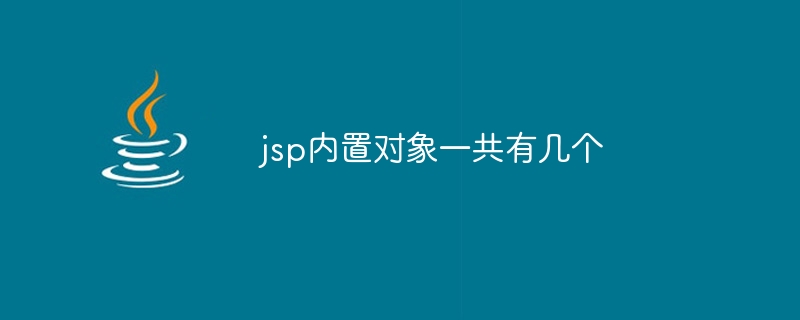
There are 9 built-in objects in jsp, namely: 1. request object; 2. response object; 3. session object; 4. application object; 5. out object; 6. config object; 7. pageContext Object; 8. page object; 9. exception object. Detailed introduction: 1. Request object, which is used to obtain the request information sent by the client, including request parameters, request headers, request methods, etc., etc. can be obtained through it.

The operating system for this tutorial: Windows 10 system, DELL G3 computer.
JSP (JavaServer Pages) built-in objects are a set of predefined objects provided by JSP technology. They can be used directly in JSP pages without declaration and instantiation. These built-in objects provide JSP developers with a convenient way to access data in request, response, session, etc. scopes. The following is a detailed introduction to the JSP built-in objects:
1. Request object: This object is used to obtain the request information sent by the client, including request parameters, request headers, request methods, etc. Through the request object, the data passed by the client can be obtained and processed accordingly.
2. Response object: This object is used to send a response to the client, including setting the response status code, response header, response content, etc. Through the response object, you can control the output of the response and realize the function of dynamically generating web pages.
3. Session object: This object is used to maintain user session information between multiple pages. Through the session object, the user's data during the session can be stored and read to realize cross-page data transfer and sharing.
4. Application object: This object is used to share data throughout the Web application. Unlike the session object, the application object has a wider scope and applies to the entire web application. Through the application object, data can be shared between multiple pages.
5. out object: This object is used to output content to the client. It is an object of JspWriter type. Through the out object, web page content can be dynamically generated and a response sent to the client. It is one of the important tools for realizing dynamic web pages.
6. config object: This object is used to obtain the configuration information of the Web application, such as Servlet initialization parameters, etc. Through the config object, you can read the configuration parameters of the Web application and provide the necessary configuration information for the JSP page.
7. PageContext object: This object is used to provide access to other built-in objects, such as request, response, session, etc. Through the pageContext object, you can easily access other built-in objects and simplify code writing.
8. Page object: This object represents the current JSP page itself, and the methods in it can be called directly. Through the page object, Java code can be called in the JSP page to achieve more flexible page logic processing.
9. exception object: This object is used to handle exceptions that occur in JSP pages. When a JSP page throws an exception, you can obtain the exception information through the exception object. It should be noted that to use the exception object, you need to specify isErrorPage=true in the page directive.
In addition to the above 9 built-in objects, there are also some other built-in objects, such as the attribute accessor of the pageContext object, some built-in objects in the JSTL tag library, etc. These built-in objects provide JSP developers with rich functions and convenient access methods, allowing developers to write dynamic web pages more efficiently.
When using JSP built-in objects, you need to pay attention to the following points:
1. The type and function of each built-in object are different, and you need to choose the appropriate built-in object according to actual needs.
2. The life cycle of built-in objects is different from the scope. You need to pay attention to their existence time and available scope.
3. When handling exceptions, you need to pay attention to the way exceptions are captured and handled to avoid leaking exception information and affecting the user experience.
4. When using built-in objects, you need to pay attention to thread safety issues to avoid data competition and errors in a multi-threaded environment.
In short, JSP built-in objects are an important part of JSP technology. They provide rich functions and convenient access methods, allowing developers to write dynamic web pages more efficiently. When using JSP built-in objects, you need to pay attention to their type, life cycle, scope and thread safety issues to ensure the correctness and maintainability of the code.
The above is the detailed content of How many jsp built-in objects are there?. For more information, please follow other related articles on the PHP Chinese website!




